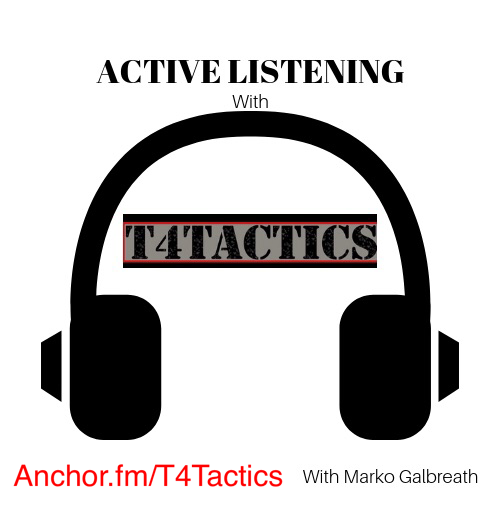Misconceptions of Active Shooter Response Training
- Marko Galbreath

- Dec 19, 2023
- 3 min read
Statistics and scholarly research will clearly show that Active Shooter aka violent and aggressive workplace attacks can be preventable.
I’m Marko Galbreath and since starting T4Tactics in 2016, I’ve been traveling the country delivering on the topic. Attendees have ranged from eight to 1,200 and so far, as of 2023, 26 states have been visited, some numerous times.
I’ve put together a list of the 10 most common misconceptions regarding this type of training that I’ve heard from businesses, churches, school, manufacturing facilities and more that are researching the topic of such training.
I hope this helps answer some questions and concerns.
• It’s only for large organizations and public spaces – Active shooter attacks can occur in any type of facility. Large manufacturing facilities, grocery stores, large hospitals, small country churches, and concerts just to name a few.
• Only involves evacuation – The training involves a wide range of options. Thinking outside of the box being one. We can evacuate, lockdown, hide, and if necessary, violently fight to stop the attacker. In many cases, what worked best is not having one single specific plan, but several options and quick thinking.
• Creates a culture of fear – Active shooter response training should never be taught out of fear or from someone that just wants to get in front of the crowd and scare folks. It’s not about firing blank guns, promoting the use of firearms, fighting each other and or jumping over tables to get out during a drill. This training is simply giving the participants the education, knowledge, skill, and confidence to recognize and either shut down an attack or mitigate it according to best known practices. This is an extremely delicate topic to many and it absolutely must be approached differently and according to the participants. Never a one size fits all approach. Geared to the type of work performed, the location of the facility, the visitors, and of course their specific risks and threats.
• Guarantees absolute safety – There is the feeling of being safe and actually being safe. The training won’t guarantee safety and or clear the facility from criminal and civil liability. What it will do is create a culture for reducing injury and saving lives, which will in turn promote safety and can lower insurance costs.
• One and done training – This training should be an on-going process of
roundtable meetings, threat assessment team culture, along with slow and controlled well planned drills which follow specific measures and guidelines.
• Encourages Vigilantism - Active shooter response training should absolutely encourage following company policy as well as working with local law enforcement agencies. It is not geared to suggest or encourage people (civilians) to take matters in their own hands.
• Creates unnecessary fear and panic – Proper training, delivered correctly, will greatly reduce fear and panic. If we have several planned and practiced responses, we’re more than likely to feel more comfortable. We must remember, the brain will take us somewhere faster and more efficiently if we’ve thought it through prior to an unthinkable event. Why do athletes train? Why do members of the military and law enforcement agencies train? To prepare.
• One size fits all approach – This is the typical “Run, Hide” Fight” approach that we’ve all heard over and over. It’s a lazy and outdated tactic if that’s all that is being delivered. This training is not a glove that fits all sizes. There is too much on the table to glaze over it. Active shooter response training should be specifically geared towards the facility, the demographics of that facility, what work is performed, what type of people visit the property, what are the specific risks and threats, what type of product or service do they deliver, and what is their “political footprint”, if any. The training should be created after the presenter has gathered specific facts from the client.
• Assumes a specific profile for an active shooter – This training is not about stereotypes, age, race, or culture. Active shooters have no set profile. The training should focus on warning signs and not individual demographics.
• Focuses solely on a Law Enforcement response – While Law Enforcement can play a crucial role; the training should also focus on a delayed Law Enforcement response. Icy roads, short staffed and or rural agencies, delays in getting to the specific area or attack, or other unforeseen issues. Active shooter response training should focus on reducing injury and saving lives through personal safety education, awareness, confidence, skill, communication, and a planned and practiced response.
#t4tactics #workplaceviolence #activeshooter #activeshooterresponsetraining #churchsafety #churchsecurity #schoolsafety #schoolsecurity #hospital #collegesafety #campussafety #situationalawarenessclass #situationalawarenesstraining #deescalation #concealedcarry
Recent Posts
See AllCal/OSHA Workplace Violence Prevention for General Industry. Senate Bill 553 (Cortese) This page will also provide employers covered by...
Many times I’ll post on my website and or social media that I’m running the Multi-state concealed carry permit. It’s an “upgrade” to the...



















Comments